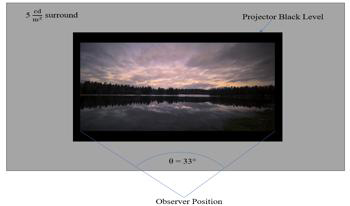References
1AbdelaalM.SchieleN. D.AngerbauerK.KurzhalsK.SedlmairM.WeiskopfD.2023Comparative evaluation of bipartite, node-link, and matrix-based network representationsIEEE Trans. Vis. Comput. Graph.29896906896–906
2AhmadZ.YaacobS.IbrahimR.WanF.WanF.2022The review for visual analytics methodology2022 Int’l. Congress on Human-Computer Interaction, Optimization and Robotic Applications (HORA)1101–10IEEE Computer SocietyAnkara, Turkey10.1109/HORA55278.2022.9800100
3AhnJ.PlaisantC.ShneidermanB.2014A task taxonomy for network evolution analysisIEEE Trans. Vis. Comput. Graph.20365376365–7610.1109/TVCG.2013.238
4AngoriL.DidimoW.MontecchianiF.PagliucaD.TappiniA.2022Hybrid graph visualizations with chordlink: algorithms, experiments, and applicationsIEEE Trans. Vis. Comput. Graph.28128813001288–30010.1109/TVCG.2020.3016055
5ArchambaultD.PurchaseH.PinaudB.2011Animation, small multiples, and the effect of mental map preservation in dynamic graphsIEEE Trans. Vis. Comput. Graph.17539552539–5210.1109/TVCG.2010.78
6ArchambaultD.PurchaseH. C.2013The ‘map’ in the mental map: Experimental results in dynamic graph drawingInt. J. Hum. Comput. Stud.71104410551044–5510.1016/j.ijhcs.2013.08.004
7ArchambaultD.PurchaseH. C.2016Can animation support the visualisation of dynamic graphs?Inf. Sci.330495509495–50910.1016/j.ins.2015.04.017
8ArleoA.TsigkanosC.LeiteR. A.DustdarS.MikschS.SorgerJ.2023.Visual exploration of financial data with incremental domain knowledgeComput. Graph. Forum41101116101–1610.1111/cgf.14723
9BeckF.BurchM.DiehlS.WeiskopfD.2017A taxonomy and survey of dynamic graph visualizationComput. Graph. Forum36133159133–5910.1111/cgf.12791
10BlueR.DunneC.FuchsA.KingK.SchulmanA.GoodallJ. R.ContiG.MaK.-L.2008Visualizing real-time network resource usageVisualization for Computer Security119135119–35Springer Berlin HeidelbergBerlin, Heidelberg
11BoyandinI.BertiniE.LalanneD.2012A qualitative study on the exploration of temporal changes in flow maps with animation and small-multiplesComput. Graph. Forum31100510141005–1410.1111/j.1467-8659.2012.03093.x
12BurchM.HuangW.WakefieldM.PurchaseH. C.WeiskopfD.HuaJ.2021The state of the art in empirical user evaluation of graph visualizationsIEEE Access9417341984173–9810.1109/ACCESS.2020.3047616
13CarbonC.-C.2010Cognitive continental drift: how attitudes can change the overall pattern of cognitive distancesEnviron. Plan. A42715728715–2810.1068/a42135
14CarbonC.-C.HesslingerV. M.2013Attitudes and cognitive distances: On the non-unitary and flexible nature of cognitive mapsAdv. Cogn. Psychol.9121129121–910.5709/acp-0140-y
15Di GiacomoE.DidimoW.LiottaG.MontecchianiF.TappiniA.
16DidimoW.MontecchianiF.PallasE.TollisI. G.2014How to visualize directed graphs: a user studyIISA 2014, The 5th Int’l. Conf. on Information, Intelligence, Systems and Applications152157152–7IEEE Computer SocietyChania, Crete, Greece10.1109/IISA.2014.6878777
17EadesP.LaiW.MisueK.SugiyamaK.1991Preserving the mental map of a diagramProc. Compugraphics ’91243324–33Sesimbra, Portugal
18FilipovV.ArleoA.MikschS.2023Are we there yet? A roadmap of network visualization from surveys to task taxonomiesComput. Graph. Forum42e1479410.1111/cgf.14794
19FlowersJ.LohrD.1985How does familiarity affect visual search for letter strings?Perception Psychophysics37557567557–6710.3758/BF03204922
20
21GelmanA.HillJ.Data Analysis Using Regression and Multilevel/Hierarchical Models2006Cambridge University PressCambridge
22GhoniemM.FeketeJ.-D.CastagliolaP.2004A comparison of the readability of graphs using node-link and matrix-based representationsIEEE Symposium on Information Visualization172417–24IEEEPiscataway, NJ10.1109/INFVIS.2004.1
23GreenP.MacLeodC. J.2016SIMR: an R package for power analysis of generalized linear mixed models by simulationMethods Ecology Evol.7493498493–810.1111/2041-210X.12504
24HenryN.FeketeJ.-D.McguffinM.2007NodeTrix: hybrid representation for analyzing social networksIEEE Trans. Vis. Comput. Graph.13130213091302–910.1109/TVCG.2007.70582
25HoltenD.IsenbergP.van WijkJ. J.Feketeand J.BattistaG. D.FeketeJ.QuH.2011An extended evaluation of the readability of tapered, animated, and textured directed-edge representations in node-link graphsIEEE Pacific Visualization Symposium, PacificVis 2011, Hong Kong, China, 1-4 March, 2011195202195–202IEEEPiscataway, NJ10.1109/PACIFICVIS.2011.5742390
26HungC.TuM.ChienT.LinC.ChowJ.ChouW.2023The model of descriptive, diagnostic, predictive, and prescriptive analytics on 100 top-cited articles of nasopharyngeal carcinoma from 2013 to 2022: Bibliometric analysisMedicine102e3282410.1097/MD.0000000000032824
27KellerR.EckertC. M.ClarksonP. J.2006Matrices or node-link diagrams: which visual representation is better for visualising connectivity models?Inf. Vis.5627662–7610.1057/palgrave.ivs.9500116
28LenstraJ. K.KanA. H. G. R.1981Complexity of vehicle routing and scheduling problemsNetworks11221227221–710.1002/net.3230110211
29LuY.GarciaR.HansenB.GleicherM.MaciejewskiR.2017The state-of-the-art in predictive visual analyticsComput. Graph. Forum36539562539–6210.1111/cgf.13210
30MichailO.2016An introduction to temporal graphs: An algorithmic perspectiveInternet Math.12239280239–8010.1080/15427951.2016.1177801
31MorrC. E.Ali-HassanH.2019Analytics in Healthcare: A Practical IntroductionSpringer Briefs in Health Care Management and EconomicsSpringerCham, Switzerland
32MruczekR.SheinbergD.2005Distractor familiarity leads to more efficient visual search for complex stimuliPerception Psychophysics67101610311016–3110.3758/BF03193628
33MunznerT.2015Visualization Analysis and DesignA K Peters/CRC Press Visualization SeriesCRC PressBoca Raton, Florida, United States
34NieminenP.2022Application of standardized regression coefficient in meta-analysisBioMedInformatics2434458434–5810.3390/biomedinformatics2030028
35OkoeM.JianuR.KobourovS. G.2019Node-link or adjacency matrices: Old question, new insightsIEEE Trans. Vis. Comput. Graph.25294029522940–5210.1109/TVCG.2018.2865940
36PurchaseH. C.BattistaG. D.1997Which aesthetic has the greatest effect on human understanding?Graph Drawing, 5th Int’l. Symposium, GD ’97, Proc.Lecture Notes in Computer ScienceVol. 1353248261248–61SpringerBerlin, Heidelberg10.1007/3-540-63938-1_67
37PurchaseH. C.CohenR. F.JamesM. I.BrandenburgF.1995Validating graph drawing aestheticsGraph Drawing, Symposium on Graph Drawing, GD ’95, Proc.Lecture Notes in Computer ScienceVol. 1027435446435–46SpringerBerlin, Heidelberg10.1007/BFb0021827
38PurchaseH. C.CohenR. F.JamesM. I.1997An experimental study of the basis for graph drawing algorithmsACM J. Exp. Algorithmics2410.1145/264216.264222
39PurchaseH. C.SamraA.StapletonG.HowseJ.LeeJ.2008Extremes are better: Investigating mental map preservation in dynamic graphsDiagrammatic Representation and Inference, 5th Int’l. Conf., Diagrams 2008, Proc.Lecture Notes in Computer ScienceVol. 5223607360–73SpringerHerrsching, Germany10.1007/978-3-540-87730-1_9
40QinX.KoutstaalW.EngelS.2014The hard-won benefits of familiarity in visual search: Naturally familiar brand logos are found fasterAttention Perception Psychophysics76914930914–3010.3758/s13414-014-0623-5
41RauschenbergerR.ChuH.2006The effects of stimulus rotation and familiarity in visual searchPerception Psychophysics68770775770–510.3758/BF03193700
42RodgersP.2005Chapter 7 - graph drawing techniques for geographic visualizationExploring Geovisualization143158143–58ElsevierOxford
43SaffreyP.PurchaseH. C.PlimmerB.WeberG.2008The ‘mental map’ versus ‘static aesthetic’ compromise in dynamic graphs: A user studyUser Interfaces 2008, Ninth Australasian User Interface Conf., AUIC 2008CRPITVol. 76859385–93Australian Computer Society
44SaraiyaP.LeeP.NorthC.2005Visualization of graphs with associated timeseries dataIEEE Symposium on Information Visualization, 2005. INFOVIS 2005225232225–32IEEEPiscataway, NJ
45SchöttlerS.YangY.PfisterH.BachB.2021Visualizing and interacting with geospatial networks: a survey and design spaceComput. Graph. Forum405335–33
46TongF.NakayamaK.1999Robust representations for faces: evidence from visual searchJ. Exp. Psychol.: Human Perception and Perform.25101610351016–35
47WolviusC.
48XuW.ZhangN.WangM. M.2023The impact of interaction on continuous use in online learning platforms: a metaverse perspectiveInternet ResearchVol. 347910679–106Emerald Publishing Limited
49YangP.BeckD.2023Familiarity influences visual detection in a task that does not require explicit recognitionAttention, Perception, and Psychophysics85112711491127–4910.3758/s13414-023-02703-7

 Find this author on Google Scholar
Find this author on Google Scholar Find this author on PubMed
Find this author on PubMed